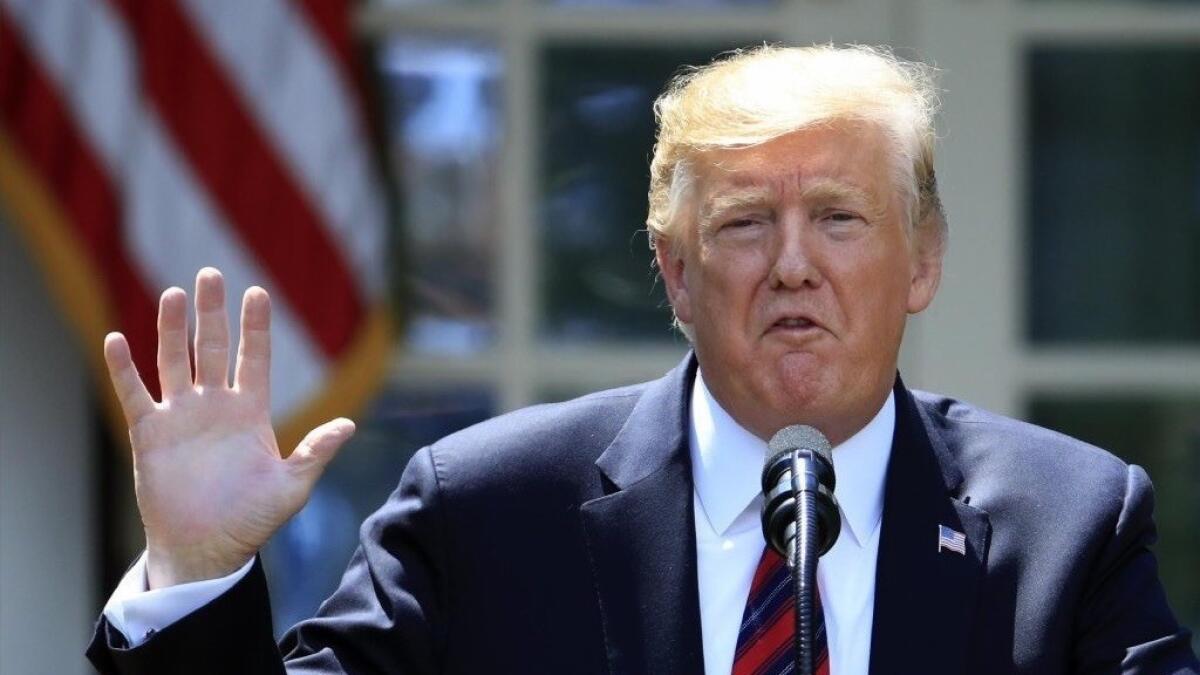Trump is giving new meaning to the âWar on Povertyâ

Call it the âTrump Squeeze.â
Congressional leaders are trying to negotiate a new set of spending limits for the next two fiscal years, hoping to avoid disruptive (and politically poisonous) government shutdowns in 2019 and 2020. But the budget talks with the White House have been unsuccessful thus far, mainly because the Trump administration has been trying to undo what has been a longstanding compromise between the two partiesâ lawmakers over military and domestic spending.
That compromise, struck in the 2011 Budget Control Act, calls for the two categories of government pursuits to remain in relative balance, with increases or cuts in one matched in the other. But the Trump administration wants to grow the defense budget as if weâre in the middle of World War III, while cutting discretionary domestic programs in the name of fiscal responsibility.
It is, of course, nothing of the sort. Itâs impossible to cut domestic discretionary spending enough to close the burgeoning deficit opened by the tax cuts Republicans pushed through in 2017 and the defense buildup.
Nevertheless, the administration is trying to use the budget pressures caused by the larger defense commitments, growing entitlement obligations (particularly in healthcare programs like Medicare and Medicaid) and tax-cut-restrained revenues to force Congress to put fewer dollars into domestic discretionary programs. This is the Trump squeeze, levering dollars out of federal housing, environmental protection and science programs and into the defense budget and tax cuts.
The administration is also seeking to trim spending on entitlements, but not all of them â just the ones that are targeted at the poor. Theyâre taking these shots under the pretext of modernizing old programs or helping people climb out of poverty. But the real aim is to cut governmental spending on safety-net programs.
A major part of this push is the administrationâs effort to add work requirements to every federally funded safety-net program. Many of these programs, including welfare block grants and food stamps, already tie benefits to work, at least to some degree. But the stated purpose of the new effort is to provide a greater incentive for recipients to end their dependence of handouts, playing into the highly debatable notion that a prime cause of poverty is laziness. The first results of the administrationâs promotion of work requirements for Medicaid support the opposite argument â that many people face insurmountable barriers to holding a steady job.
The Trump administration also may be seeking to make it harder for struggling Americans to qualify for aid. Many safety-net programs are available only to households with incomes at or below a certain percentage of the federal poverty level, which is adjusted every year for inflation. This month, the White House Office of Management and Budget sought public comments on how to update the way inflation is measured. The fear is that the OMB will shift to a more conservative way of measuring inflation that critics say overestimates the ability of poor people to switch to cheaper products when prices rise.
As Pacific Standardâs Emily Moon points out, the real problem is the way the poverty level itself is calculated. The methodology was developed more than 50 years ago, and it ignores how household expenses have shifted as housing and healthcare costs have skyrocketed. So thereâs a problem to be tackled, just not the one the White House seems interested in.
But given this administrationâs hostility to spending on the safety net, maybe we should be thankful that itâs not trying to update how the poverty level is calculated.
Enter the Fray: First takes on the news of the minute Âť
More to Read
A cure for the common opinion
Get thought-provoking perspectives with our weekly newsletter.
You may occasionally receive promotional content from the Los Angeles Times.











